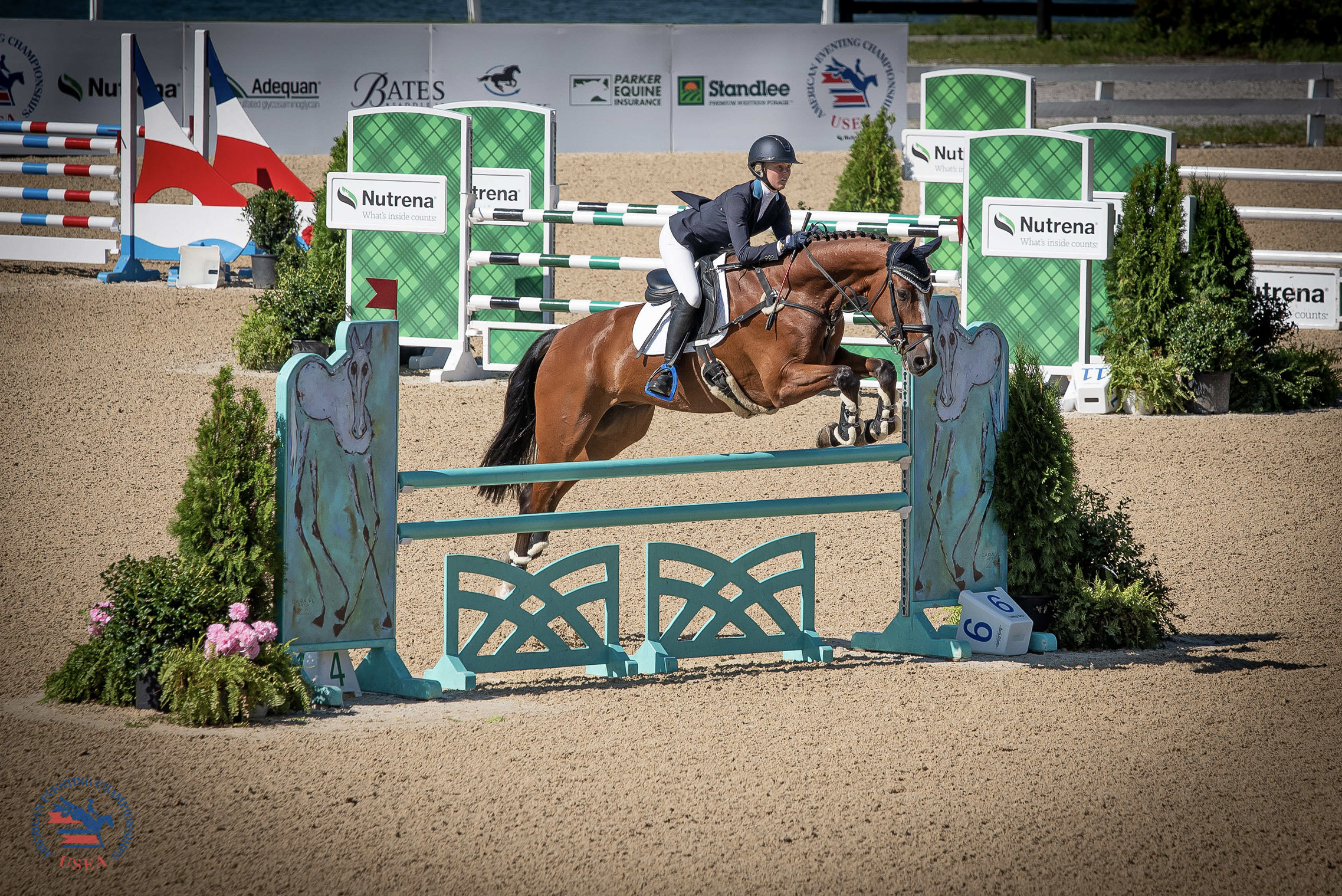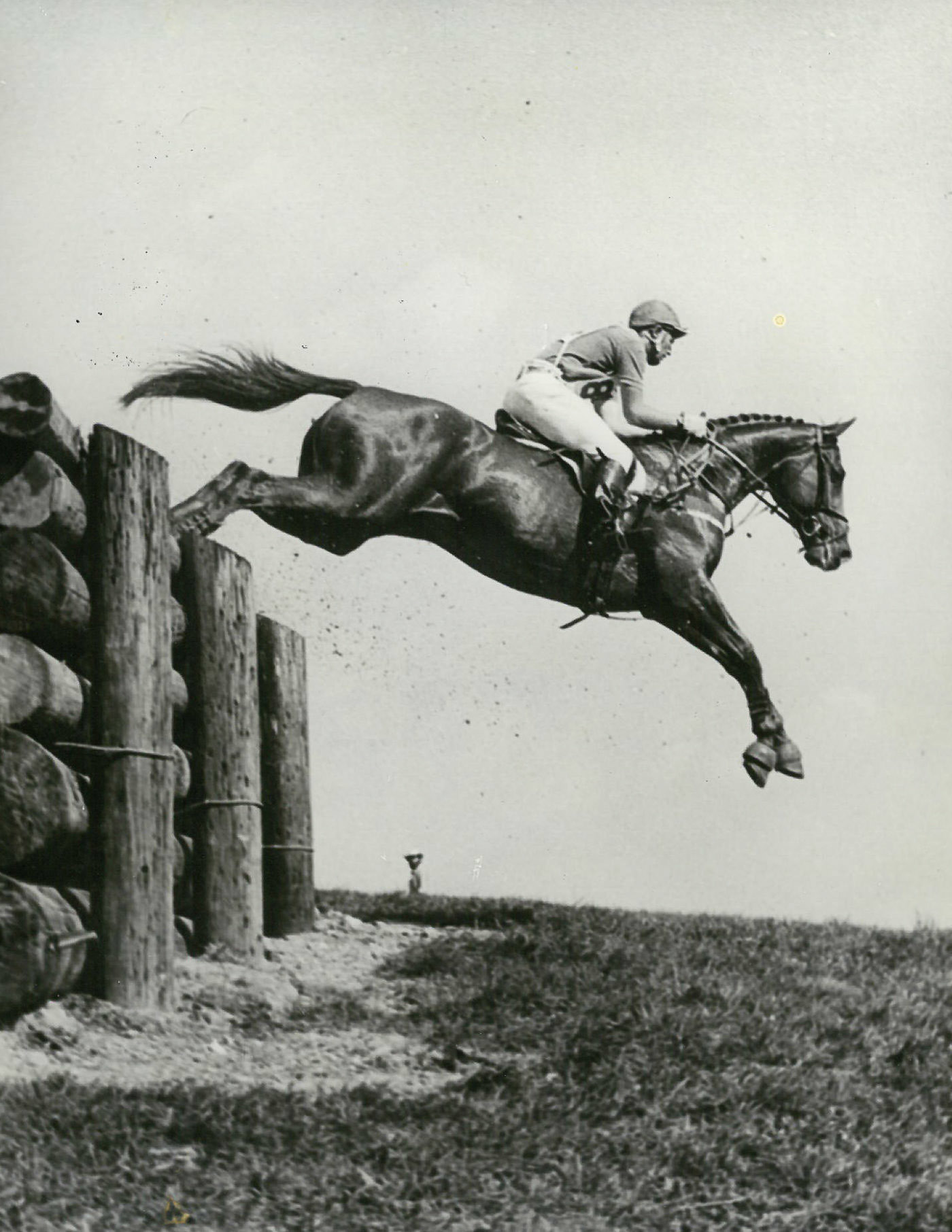Renew Your USEA Membership for the 2023 Season Today LEARN MORE

Equitation: Not necessarily a dirty word!
The mere mention of the word “equitation” in eventing circles is often met with rolled eyes and raised hackles. No doubt for many eventers the word conjures up images of expensively clothed stick-people with overly arched backs posing as riders on their overly prepped mounts. Those images do not represent what the word describes, nor do those images represent how the discipline of correct and effective equitation has served the great icons of equestrian sports in all three disciplines (Think William Steinkraus, Reiner Klimke, and our own Jim Wofford).
Correct position + Effective use of the position = Equitation for Eventing
The word equitation has a broad and important definition: The art and practice of horsemanship and horse riding. It could arguably be expanded as follows: The art and practice of riding with a correct and effective position, while understanding how utilizing the elements of a correct position is the essential tool used to both influence the horse and to enable the rider to move seamlessly in concert and balance with the horse.
Correct position and effective equitation have been developed and fine-tuned since Xenophon wrote the "Art of Horsemanship" 2300 years ago. There is nothing haphazard, cosmetic, or inutile about the correct position, nothing trendy or fashionable. Each element of a correct position has its purpose, and the elements of the correct position combined have enormous power and influence over the horse. Correct and effective equitation was not born yesterday; rather we have thousands of years of study and discipline honing the practice to a fine art, which is as functional as it is beautiful.
There has been one significant revelation in the history of the correct riding position. That was the introduction of the forward seat by Italian Cavalry officer Frederico Caprilli, which was formally adopted by the Italian Cavalry in 1904. This evolution of the position for galloping and jumping revolutionized the art of riding fast, while the classical seat for dressage remained and still endures as the standard for riding and training horses.

Where Form Meets Function
Due to the unique combination of disciplines in eventing, the requirement of good equitation for event riding comprises of two interchangeable balances: The balance of the rider’s weight centered over the seat bones (in the saddle) and the balance of the rider’s weight over the feet (on the stirrup irons). Good event riders master both balances; they master the ability to effectively influence the horse from both positions, and they master the ability to move seamlessly from one position to the other as needed.
The "USEA Eventing Handbook by the Levels" details the basic elements of the correct position in the Overview, under the title: A Correct Position = A Correct Foundation. The seats and positions for jumping and for cross-country riding are explained on page 10. Additionally, for each competition level, the Handbook details the “Position, Balance, and Aids” requirements for each of the three phases. Reviewing these requirements at each progressive level can assist coaches and riders to identify the “holes” in their riding. However, EVERY student and coach should review the position requirements as described at the Starter Level in the Handbook, as that is where the correct position is described in the fullest terms.
Most problems in riding and training are rider-based; meaning the rider has not been effective in communicating to the horse what they want. Most rider problems boil down to a combination of flaws or weaknesses: They do not understand what aids to apply, they do not understand how to use their aids effectively and independently of their core balance, they are not well-balanced, or they compromise their balance to apply the aids. In all cases and at all levels of expertise, a review of the correct position and the effective application of the aids can be key to finding the path forward. Good, effective equitation can solve many problems.
There is one thing we know for sure: What the horse cares about more than anything in the world is where and how well the rider is balanced. In the horse’s perfect world, the rider is precisely centered, balanced, secured, and stable with their weight intentionally balanced on a specific point over the horse. A good rider remains stable on that point of balance regardless of where or how the horse moves. That stability is completely independent of the application of the aids, meaning the rider can use their aids: primarily legs, arms, and angle of the torso, without any change in where and how their weight is balanced and secured. A correct position uses gravity to its utmost advantage by centering and securing the body mass over the rider’s point of balance and relative to the horse’s center of gravity.
When your equitation is excellent, so is your balance. When a horse believes that the rider is stable, secure, and staying with the motion, and when the rider can talk to the horse without compromising that omni-important secure balance, the level of understanding and trust in the horse increases exponentially.

Here are some things for coaches and riders to keep in mind as they work on their effective equitation:
Build it From the Base Up
The “base” for galloping and jumping is the lower leg. Without a correct and secure leg position in a shortened stirrup the rider cannot anchor their balance over the center of gravity of the horse. The leg position in a longer stirrup also provides security, centering, and balance by using the gravitational pull of the longer leg to deepen the seat and draw the rider’s weight down to the horse. Therefore, the attention to every detail of the leg position is paramount whether starting a new rider or evaluating an experienced one.
It is easier to teach riders to sit on a horse than to stand in the irons. After all, there is a lot of time spent practicing “sitting;” in the car, at school, in front of the TV. Conversely, maintaining the “athletic stance” of the forward seat, standing with the weight on those two little trapezes known as the stirrup irons as required for fast riding and jumping, takes practice to develop and achieve a level of proficiency. With practice and repetition comes strength and confidence. Event riders must practice in their forward seat as much as they practice their full seat.
The What, Why, and How
Effective equitation can be broken out into various stages of learning to be mastered, but it is a known fact that a student will be far more likely to “buy into” a change or try a new skill if they understand why they are doing it. It is always important to relate the position work to the effectiveness that position creates.
Each element of the correct position has its function. From the more obvious: correct leg position and proper posture; to the correct position of the upper arm in the shoulder socket, the angle of the elbow the position of the hand with the thumb and forearm in line with the rein—all have a reason and a purpose born of balance and physics, much of which is documented in the Handbook. Understanding the physics of good equitation, i.e., the correct physical application of the correct position and aids, is paramount to the learning process.
It may be difficult to make wholesale changes all at once. Teaching a continuous overview of position without drilling down to each detail is not effective for most riders. Rather, beginning with the base of support, and working up, mastering one or two elements in a building block approach, will develop the strength and effectiveness that lasts a lifetime.
One might think of position work in these increments:
Also important to the process is to understand the Stages of Mastery:
There are thousands of nuanced variations of the rider position and application of the aids relative to any moment in time, depending on what the rider is trying to accomplish and how the horse is responding (Think: galloping position, rebalancing position, approach position, jumping position).
The key is understanding and mastering the basic form and functional relationships BEFORE trying to complicate the ride. These nuances are not possible without the proper foundation of good equitation. There are hundreds of books written on the subject, and the "USEA Eventing Handbook by the Levels" is one excellent reference, available to all members on their dashboard.
Important and Intended Consequences of Effective Equitation
One more important by-product of mastering good equitation is that the ability to learn “feel” is facilitated and accelerated. As ECP Faculty member Phyllis Dawson mentioned in her October 2022 article, teaching “feel” is potentially the most difficult challenge for an instructor and coach. With a good foundation of correct equitation, it is exponentially easier to “feel” what is happening under you and to learn to react appropriately, with “feel.”
Likewise, the quest for the most important quality of the successful event rider, developing the independent seat; varied and mastered for each phase of eventing as so expertly detailed in ECP faculty member Mary D'Arcy’s November 2022 article, is predicated on a foundation of correct position.
On a last note, I often hear something like this when drill down on the importance of equitation: “Well, so-and-so five-star rider doesn’t ride with his heels down, or in classic form, or blah-blah-blah...and yet, they are very successful.” It is true that some riders, through years of experience, exceptional athleticism, and sometimes sheer, brute strength, have found a way to succeed. The point is: Unique technique is unique to those individuals. That is not teachable. That is not replicable in a systematic way.
Ride Correctly and Your Horse Will Go Correctly
We have the recipe for good riding, and it begins with correct riding, with effective equitation. We can teach it, and we can replicate it in any rider who is willing to work at it.
Have a great ride!
Jennifer Howlett-Rousseau is a USEA Certified Level III coach, serves as an Advisor to the ECP program, is on the USEA ECP committee, is the USEA Vice President of Education, at-large, and is a Certified Trainer with USHJA. She's based in Woodstock, Illinois, where she runs her business, L'Esprit Equestrian, out of Jigsaw Farms. She was recently awarded the Broussard Grant for licensed officials, and has successfully completed the requirements to become a “r” eventing judge. Her interest in developing Young Riders has continued to inspire and produce riders competing at the NAJYRC, and in 2017 she served as the Young Rider coach for Area IV riders, winning the Team Gold Medal in the NAYRC CCI2* (now CCI3*) competition. L’Esprit Equestrian continues to flourish as a top eventing training program, producing riders and horses through all levels of competition.